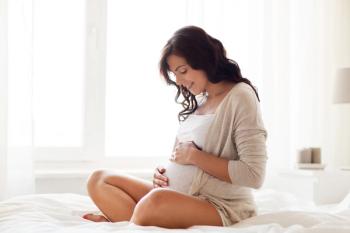
2025 ACOG Annual Clinical and Scientific Meeting: What you missed
Find out what you may have missed at the 2025 ACOG ACSM.
The 2025 American College of Obstetricians and Gynecologists (ACOG) Annual Clinical and Scientific Meeting (ACSM), held in Minneapolis, Minnesota, has officially come and gone, with hundreds of sessions, abstracts, and posters presented on the latest data, recommendations, and calls to action in the women's health care space.
Contemporary OB/GYN covered several sessions, poster sessions, and oral abstracts from the meeting, and interviewed multiple presenting authors and experts across a vareity of subject matter.
Below, we recap our complete coverage from the meeting, with direct links to our full articles, video interviews, and Q+A discussions with presenting authors.
Thank you for filling out some brief information to access this article, and for reading Contemporary OB/GYN.
Articles
Pain management guidance for in-office uterine, cervical procedures updated by ACOG
On May 15, 2025, ACOG released a new Clinical Consensus urging clinicians to prioritize shared decision making and individualized pain management for in-office uterine and cervical procedures. The guidance highlighted that procedures such as IUD insertion, endometrial biopsy, hysteroscopy, and cervical biopsy are often performed without adequate pain control, due in part to clinician underestimation of pain and systemic biases. ACOG emphasized that pain should be proactively addressed and tailored to each patient’s needs, taking into account factors such as age, trauma history, and anxiety levels.
The consensus provided procedure-specific recommendations, including the use of local anesthetics like lidocaine and paracervical blocks, while noting limited or conflicting evidence for agents like misoprostol. Nonpharmacologic options such as music and virtual reality show potential but require further study. ACOG also called for more inclusive research that addresses racial, gender, and trauma-related disparities in pain experiences. The document concluded that clinicians should be well-versed in a range of pain relief options and apply them in a patient-centered, evidence-based manner.
Use of hair, cosmetic products linked to increased phthalate exposure in pregnancy
Researchers from Emory University reported that frequent use of personal care products—especially hair products and cosmetics—during early pregnancy was linked to increased exposure to phthalates, chemicals associated with adverse birth outcomes. In a study of 153 African American participants from the Atlanta African American Maternal–Child Cohort, those who used cosmetics or hair products more often had significantly higher urinary concentrations of several phthalate metabolites, including antiandrogenic phthalates and monocarboxyisononyl phthalate (MCINP). Notably, daily or weekly use of hair relaxers was associated with lower levels of certain phthalates like SDEHP.
The findings highlighted personal care product use as a potentially modifiable exposure risk during pregnancy. With known links between phthalates and outcomes such as preterm birth, the researchers emphasized the importance of counseling patients on safer product choices to reduce prenatal exposure.
Air pollution linked to risk spontaneous preterm birth risk
Maternal exposure to fine particulate matter (PM2.5) during pregnancy is associated with an increased risk of spontaneous preterm birth (sPTB), according to research presented at the 2025 ACOGACSM. In a study of over 409,000 singleton births from southern California, investigators found that higher exposures to total PM2.5, black carbon, nitrate, and sulfate, particularly during the second trimester, were significantly associated with sPTB. The risk was more pronounced among individuals with lower income, education, and green space access, underscoring the role of social determinants in environmental vulnerability.
The findings also extend to postpartum mental health. A related study of over 200,000 mothers linked PM2.5, PM10, and ozone exposure during pregnancy to higher odds of postpartum depression (PPD), especially among women with lower education and income. These results point to fine particulate pollution as a modifiable environmental risk factor for both adverse birth outcomes and maternal mental health, supporting calls for targeted interventions and policy change.
Expert interviews
Negative pressure wound therapy reduces c-section infections and costs
In a real-world study involving over 10,000 women, Tia Welsh, MD, MPH, FACOG, reported that single-use Negative Pressure Wound Therapy (NPWT) devices set at –80 mmHg were more effective than the traditional –125 mmHg devices in preventing surgical site infections after cesarean delivery. In an interview with Contemporary OB/GYN, Welsh emphasized that the –80 therapy significantly reduced rates of infection, seromas, and superficial wound complications, while also lowering health care costs by over $700,000 per 1,000 patients compared to the –125 therapy.
Welsh stressed the importance of proactive wound care, noting that complications can negatively affect maternal mental health, infant bonding, and breastfeeding outcomes. She encouraged providers to prioritize prevention using devices like the PICO dressing and to offer emotional and clinical support to patients experiencing wound issues. The findings support the use of more affordable NPWT options to improve outcomes in postpartum recovery.
Johanna Finkle, MD, on weight loss management in reproductive-aged patients
Effective weight loss counseling for reproductive-aged women requires ob-gyns to assess clinical eligibility, reproductive goals, and potential medication interactions, according to Johanna Finkle, MD, of The University of Kansas Health System. In a presentation at the 2025 ACOG ACSM, Finkle emphasized evaluating BMI and weight-related comorbidities such as hypertension or polycystic ovary syndrome. She advised clinicians to consider whether patients are trying to conceive, undergoing fertility treatment, or using contraception, highlighting that some weight loss medications, including GLP-1 receptor agonists and topiramate-containing therapies, may reduce the effectiveness of oral contraceptives and carry teratogenic risks.
Finkle categorized pharmacologic options into short- and long-term therapies and provided guidance on contraceptive counseling, favoring long-acting reversible contraception for patients on higher-risk medications. She also discussed updated preoperative guidelines for GLP-1s, which now call for a 24-hour clear liquid diet and ultrasound evaluation rather than a week-long medication hold. Citing a new 2025 Lancet definition of obesity as a disease state, Finkle encouraged ob-gyns to adopt a non-stigmatizing, evidence-based approach. She acknowledged time constraints in practice and suggested dedicating specific appointment slots for weight management, integrating counseling, motivational interviewing, and the full spectrum of obesity medicine pillars.
Tailoring menopause care to your patients' goals, with Jill Liss, MD
At the 2025 ACOG ACSM, Jill Liss, MD, MSCP, FACOG, emphasized the early menopause transition, typically between ages 50 and 60 years, as a vital window for improving long-term health. In her presentation, Liss highlighted new understanding of brain mechanisms behind vasomotor symptoms and stressed that this period presents an opportunity to address not just menopause-related complaints but also cardiovascular, bone, and cognitive health. She described hormone therapy as safe for most women within 10 years of menopause, particularly those with symptoms, early menopause, or osteoporosis risk, while advising caution in patients with certain medical histories.
Liss encouraged clinicians to counter persistent misconceptions that hormone therapy is broadly unsafe and to individualize care based on patient history, goals, and values. She underscored the importance of both pharmacologic and nonpharmacologic interventions—including cognitive behavioral therapy, diet, and exercise—and recommended clinicians utilize evidence-based resources from ACOG and the Menopause Society. “No same protocol is going to work for every patient,” she said, urging a personalized, evidence-informed approach to menopause management.
For other highlights and exclusive expert interviews, check out our full meeting coverage of the 2025 ACOG ACSM here.
Newsletter
Get the latest clinical updates, case studies, and expert commentary in obstetric and gynecologic care. Sign up now to stay informed.











